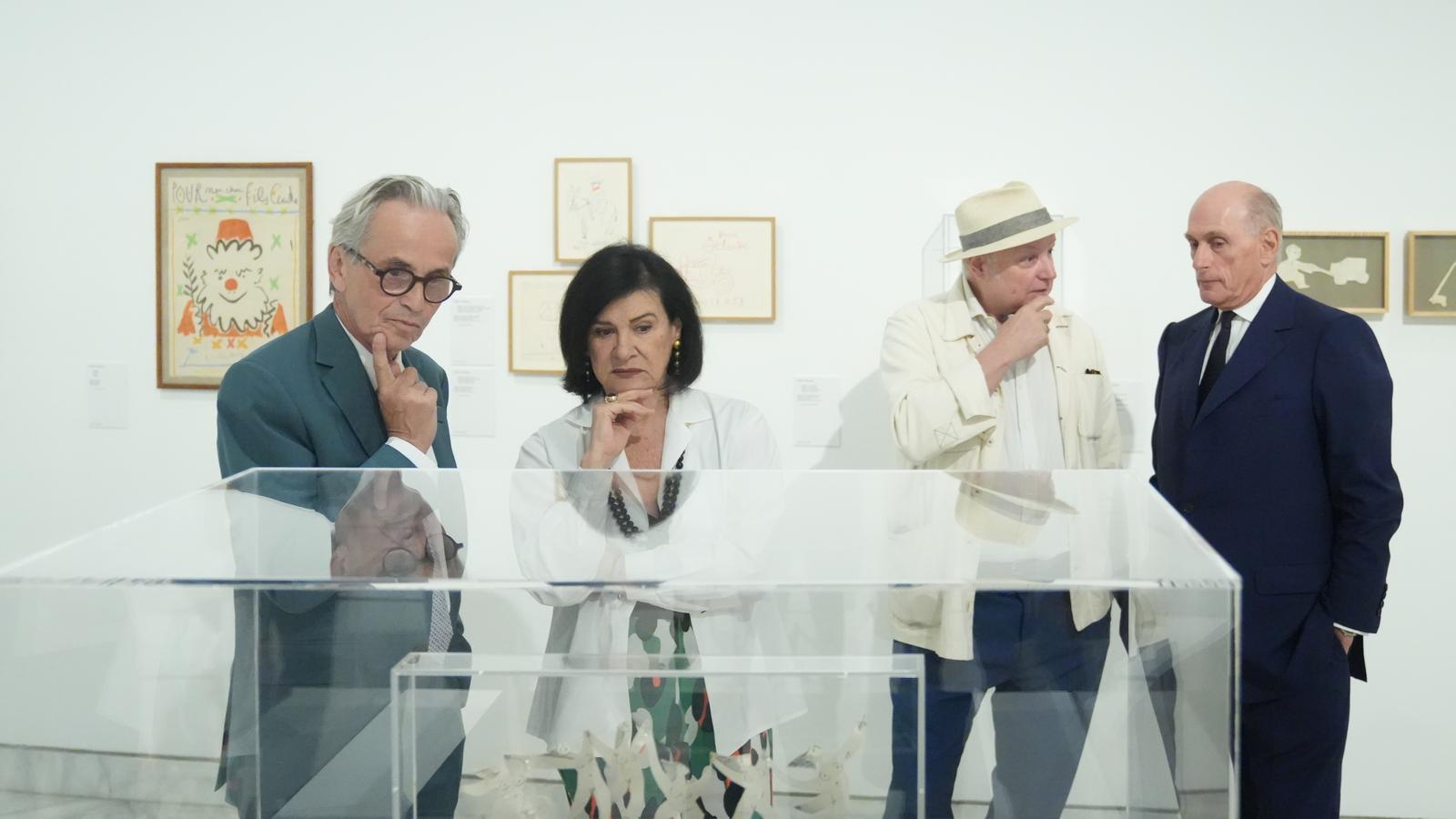"Being Picasso's daughter isn't easy, but you can't escape it either."
The Museu Picasso showcases the creativity and games of Picasso and François Gilot with their two children: Claude and Paloma

BarcelonaClaude Picasso was given two toy cars when he was little. He was delighted with the gift, but couldn't play with it. His father, Pablo Picasso, appropriated them and made a monkey head. The hood acts as a snout and the fenders simulate lips. Claude's sister, Paloma, had the same experience with dolls. When she was 3, her father made her a series of seven dolls with her face. "As soon as he gave them to me, he took them from me, but thanks to that, we can see them, and now they're mine," she explains. Paloma Picasso, who presented the exhibition this Thursday Growing up between two artists. Tribute to Claude Picasso at the Picasso Museum in Barcelona.
The exhibition, which will be on display until October 26, was conceived by Paloma Picasso herself, with the help of her brother's family, who died in the summer of 2023. It includes photographs by Robert Capa and Edward Quinn and the artworks and toys created by her parents. Françoise GilotThis is the first time that Gilot's work can be seen at the Museu Picasso in Barcelona. "With this exhibition, we wanted to vindicate not only the figure of our father, but also the artistic vision of our mother, Françoise Gilot," says Paloma, the only surviving of Picasso's four children and current head of the Picasso administration and patron of the Museu Picasso in Barcelona.
In the museum's galleries, you can see the domestic intimacy of La Galloise, the house in the Provençal pottery town of Valauri where Picasso discovered his passion for ceramics. His entire family lived there: Picasso, Gilot, and their two children, Claude (1947-2023) and Paloma (1949), from 1948 to 1953. That year, Gilot abandoned the painter and returned to Paris with her two children. It would not be easy to continue the artistic project and outlive the renowned Malaga artist, but she did. She was a brave woman, who also published My life with Picasso (1964). It was a huge publishing success, but most artists joined forces with Picasso, and Gilot found it even more difficult to gain recognition.
"Forgotten" by their parents
"When my father created, he didn't differentiate; it didn't matter if it was toys or works of art, he always took everything seriously, but with a smile. Both Dad and Mom worked extremely hard, and this intensity is evident in the exhibition," explains Paloma. Picasso and Gilot made everything with their hands and had a great imagination. Children and parents often dressed up as musketeers, cowboys or bullfighters. The spirit of these games exudes in the different rooms, which display some sixty creations by Picasso and a dozen by Gilot. In an interview, Claude acknowledged that her parents "forgot" them: "We were delighted that they forgot about us." Implicit in this "forgetting" was a great freedom: the two brothers could do whatever they wanted. "Some people might imagine that we did silly things, because for some, with their fried-fish brains, Picasso did silly things. In any case, we knew they weren't silly." Claude asserted that, from her parents, she learned to take risks, to jump into the void.
Paloma Picasso admits that she has virtually no memories of when her parents were together. They separated when she was just 3 years old. "They never spoke ill of each other, and when they separated, I spent all the summer months with my father. I didn't experience it as traumatic." As curator of the exhibition, she affirms that this tribute to Claude is also a way of sharing "the years of light, imagination, and learning" they experienced together: "Art was our common language." At the Museu Picasso, for example, you can see a book that their mother made and gave them for Christmas in 1952. It had a mythological title: Sphynx Pigeon, alluding to the fact that Paloma was a rather quiet child.
"My father used his life as an example, and my mother was afraid that we would hate art because it stole our parents from us. My mother would lock herself in her room to create and wouldn't take us to museums all day, because she wanted us to experience it as a hobby, not an obligation," says Paloma. However, being Picasso's daughter isn't easy: "It's not easy to exist beyond Picasso, but you can't escape. Nor is it easy being my mother's daughter, who always set herself huge challenges, but she taught me that a girl can do the same as a boy, or better. She's been a part of my life. With my last name, enrolling in fine arts would have been disastrous," she says. She ended up choosing jewelry design.
There have been many exhibitions of Picasso's work, but the curator explains that every day she discovers things she didn't know before: "I've been able to show the lives of my father, my mother, and my brother." She looks fondly at a portrait of Claude with galteras, which Picasso made in 1948. "It really stands out here, among all the other works," she says as she walks through the exhibition, which begins with shadow puppet drawings that feature Pablo Picasso, Françoise Gilot, and their two sons. For Paloma, although they were two years apart, Claude was like her twin brother.
